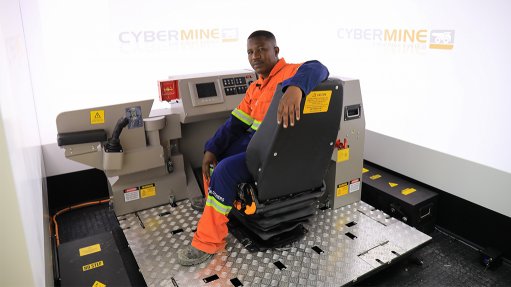
LEVELING UP Venetia is prioritising the training of long drill operators, who are key to advancing the Venetia Underground Project, and trackless mobile machine operators to realise first production in 2023
Critical skills are being prioritised at the Venetia training centre to ensure that diamond mining giant De Beers’ $2.2-billion Venetia Underground Project (VUP), in Limpopo, achieves first production this year.
“We are prioritising the training of long drill operators, who are key to advancing the VUP, and trackless mobile machine operators to realise first production in 2023, which is a huge milestone for the project,” says Venetia mine senior operational readiness and transition manager Stoffel Molokwane.
To date, 8 549 interventions for both existing and new employees have been completed since De Beers commissioned the Venetia training centre in June 2021, as part of its VUP. In 2021, 2 857 training interventions were completed, with this figure doubling to 5 692 in 2022, says Molokwane, adding that the centre has also facilitated learnerships.
The R188-million training centre is aiding Venetia’s transition from an openpit mine, which opened in 1992 and closed in December last year, to an automated underground mining operation to extend the life-of-mine to 2046. The highly mechanised mine will use sublevel caving to mine up to six-million tons a year of kimberlite ore to produce between 4.5-million and 5.5-million carats a year of diamonds. Once the VUP’s ramp-up to produce nameplate capacity is completed in 2026, the underground workforce will number just more than 1 000 people.
“Underground mining is new to Venetia, therefore, we have employed numerous skilled individuals at the training centre to facilitate training, with many coming from mines with similar environments,” says Molokwane.
Tackling Challenges
As part of the mine’s transition, Venetia has had to address a general perception of fear for working underground.
“We have brought in change management agents and frequently host workshops to engage with the union leadership structures to provide a platform to raise concerns. This has been working very well,” he notes.
Molokwane explains that the training centre is continuously evolving as technology advances in line with the progression of the VUP.
“We are building an underground mine that will eventually be autonomous and, thereby, will require skilled people underground. People will still be responsible for operating mining equipment, but will do so remotely, removed from any potential danger underground.
“It is quite a journey to get to this point and it involves a couple of phases through which, incrementally, more machinery is introduced underground until we have an autonomous mine, which has higher operating efficiencies and improved employee safety, and delivers the flexibility to operate from various points across the mine.”
The mine’s autonomous state will not cause a drastic decrease in the number of people employed at Venetia, stresses Molokwane.
“We will still have almost similar number of employees. Employees with the requisite underground mining experience and qualifications will be deployed as systems technicians and operators.
“The multiple systems needed for the effective functioning of the autonomous mine will require troubleshooting and a significant amount of maintenance and repairs. There's lots of damage that can take place when using heavy machinery in confined spaces.”
To date, training has covered aspects such as induction, including health and safety training, the operation of underground equipment and technical aspects, including geology.
“We also cover training for ventilation, which is a key aspect for underground operations, as well as sophisticated equipment such as winders, which can be dangerous if people are not adequately trained to identify the risks around them,” adds Molokwane.
Early warning systems training is also undertaken to ensure that mineworkers understand the meaning of various alarms for safety purposes.
The training centre has e-learning facilities for 65 learners, can accommodate classroom sessions for 95 learners and is equipped with six simulators.